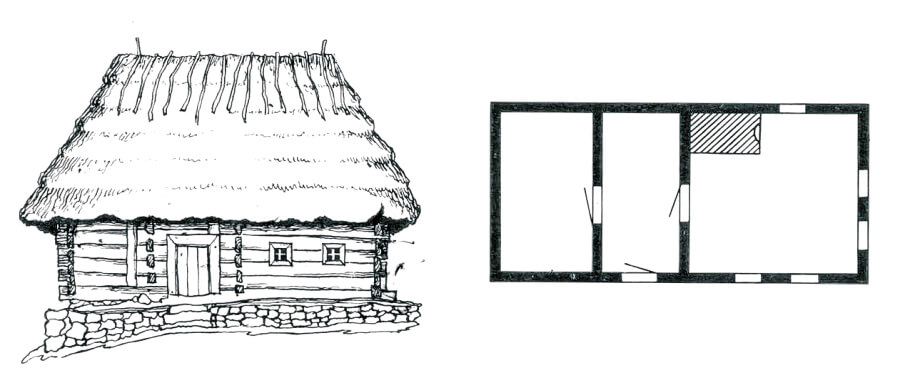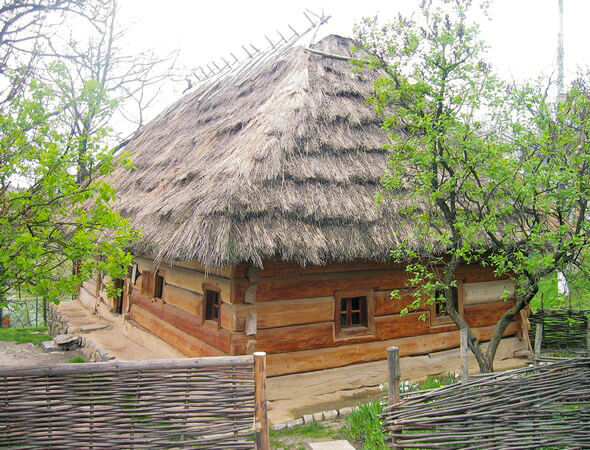Certain prohibitions and beliefs were associated with logging tree.It was not allowed to use wood from trees that had grown on the site where it was once located for the construction of housing or outbuildings church, оhow many of these would lead to the death of the owner or one of his family. Not used a tree with fungus (mistletoe) because the tenants will be boils and sores, as well as Shostak tree, because the residents will get dry; it was the tree toppled by the storm because it will eat worms, wood with two cores (“the husband with his wife will be svazatsa”), a tree felled by lightning. Transcarpathian Lemke from the village Saricheva never built a house of poplar.
If when вibori places under construction, along with rational, proven traditions, many mystical beliefs were adhered to, and even when selecting construction material, such as the time of harvesting, the quality of timber, and its preservation, they were based only on centuries-old experience.
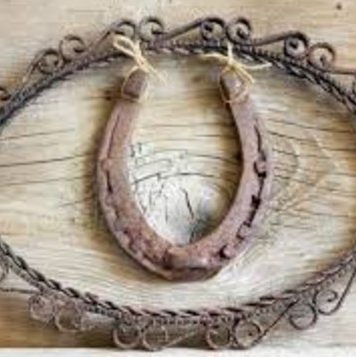
On construction the best material was always selected at home. Unsuitable considered wood from trees that grew on the water, so they quickly powdered and crumbled.
The best trees were considered to be those that they grew slowly, evenly, and high, and their rings were small and therefore very small. thick. Such trees, according to old-timers, are hard as iron.
The best time to harvest wood is at Boikivshchyna, Guzelsin we counted December, January and February, because then it is hard and strong and does not spoil for a long time.
In June, July, August trees never cut, because then the trees are circled by the juices that make them soft, fragile.
If, however, due to various circumstances had to cut the trees in spring or autumn, don’t cut off the top branches because it pulls all the juice from the tree for two weeks, and only then cut a couple of inches, I abrupltly bark (“I korovavala”) to ” worms under it is not multiplied” and sharpened the main trunk.
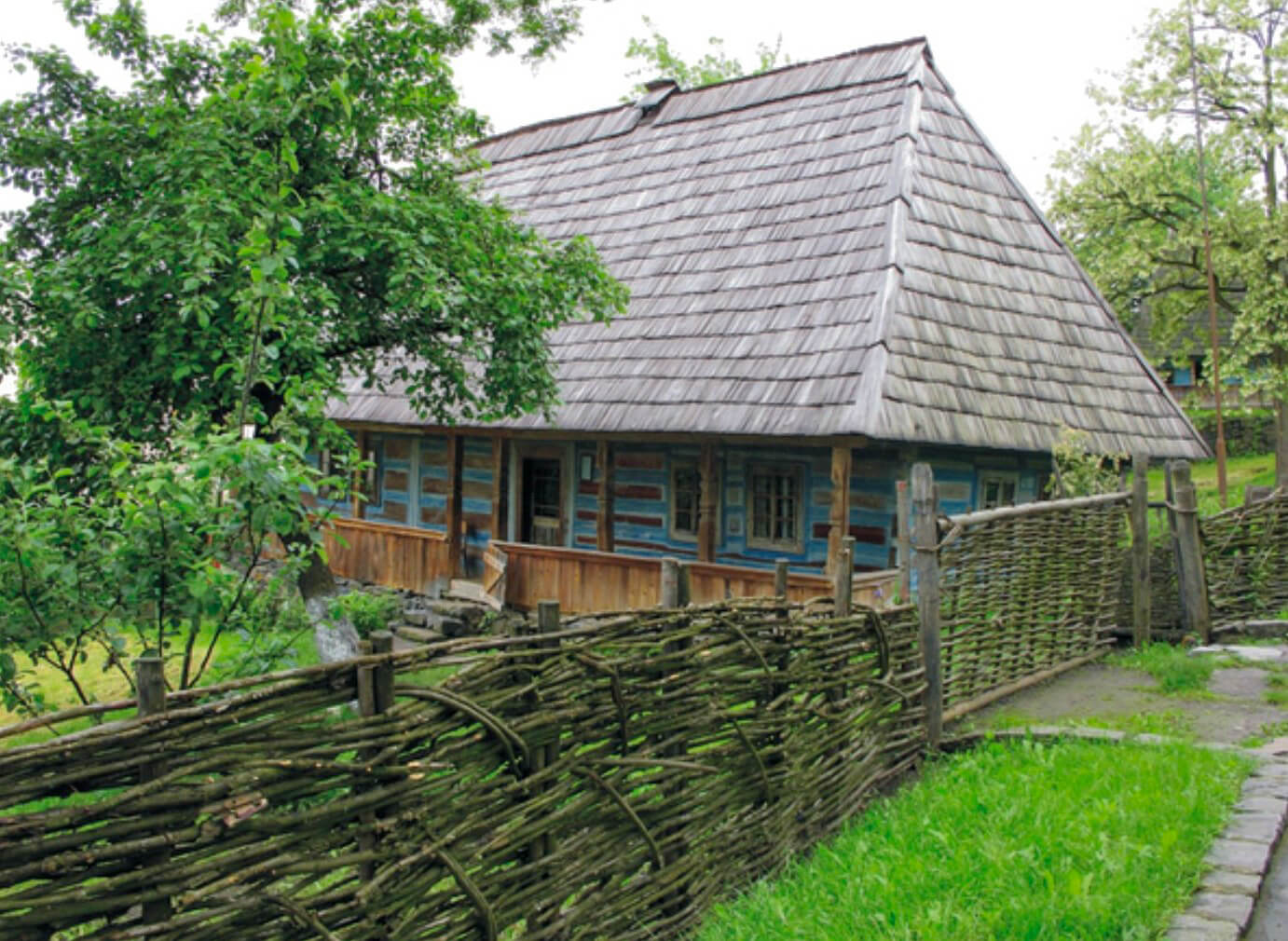
On Mezhgorsky Boykovschina, as a rule, also cut down a tree in the winter, because then “it is dead and therefore the hardest”. According to folk tradition, the tree on the structure should be “simple as a candle”,” clean, and not steep”, because only this will be good to split into two parts – “captivity” and will be healthy “” like bell”. Existed popular belief,that in a house built of such wood, all the inhabitants would be slender and tall and healthy, and no calamity would attach to them.
An experienced host could tell trees by sound: if they “ring” from an axe blow, it means they are healthy, and when dull buzzing-gunpowder.
He also knew that it is not good the tree, which was thunder, because this hut also hit a thunder, and burn it, and also inverted by the wind, because it pushed the “evil force” that ” through it would be moved to a new house and it would be bad to live”.
This belief had a healthy basis, because when a tree was struck by lightning or blown down by the wind, it should have been cracked and not suitable for construction.

In the village of Turya, the Apiary has never used trees that were hung over other trees during cutting. In the village Turya Remeta they didn’t use trees where someone hanged themselves.
There were their own customs and when choosing stones for foundation’s. Lemki never used stones from the roads, as people often cursed such stones when they tripped over them.
It was considered unlucky to start building a house in a leap year. Cutting down a tree was considered best in the “new”period or “full” moon, this was not done when the Moon was on the wane (“old month”).
All these customs and traditions they contain a lot of rational knowledge, which is obtained thanks to the centuries-old experience of Transcarpathians.
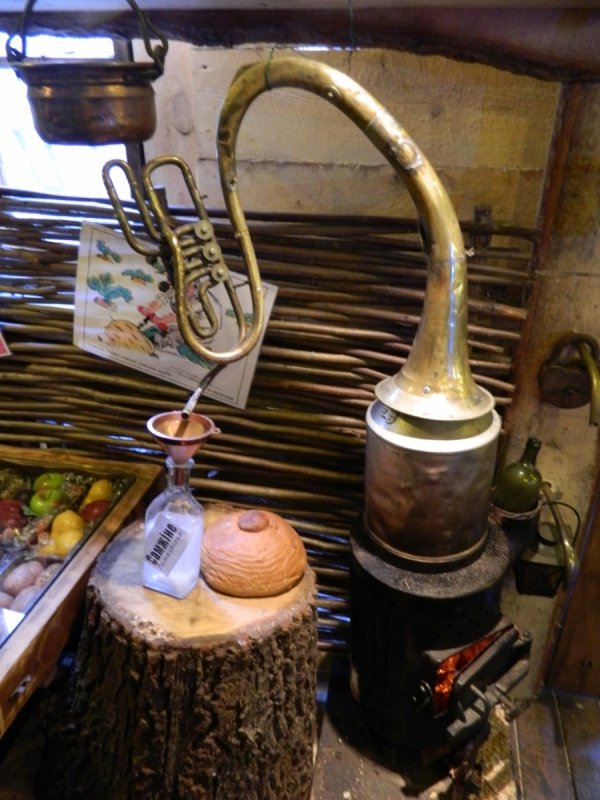
Transcarpathian hut The plan of the Transcarpathian home The house is in its original condition Transcarpathian tavern




